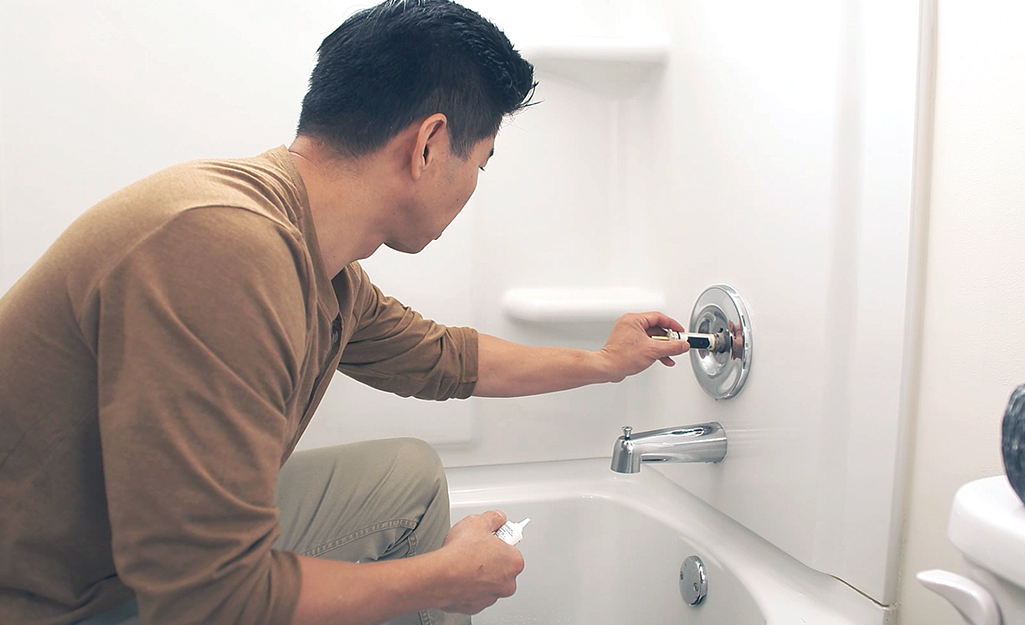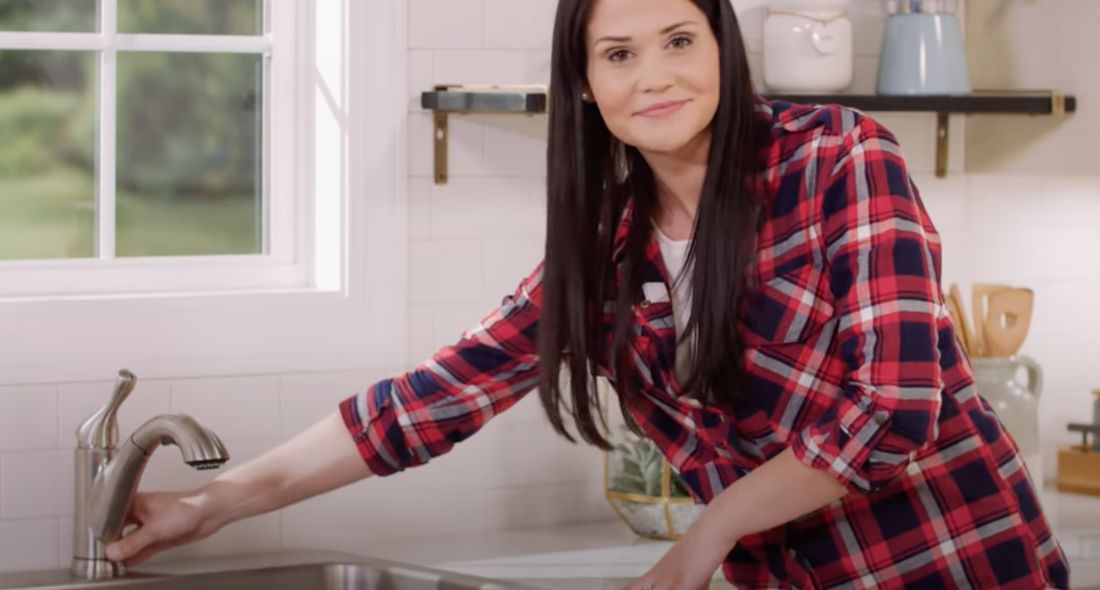Exploring the Relevance of Addressing a Faulty Faucet
Exploring the Relevance of Addressing a Faulty Faucet
Blog Article
We have uncovered this great article on What Causes Leaky Faucets & How To Fix Them directly below on the internet and felt it made good sense to write about it with you on this site.

Dripping taps could feel like a minor inconvenience, but their influence exceeds just the annoyance of the noise. From drainage to sustaining unnecessary monetary costs and wellness dangers, overlooking a trickling tap can cause various effects. In this article, we'll explore why it's critical to resolve this common family concern promptly and efficiently.
Waste of Water
Ecological Influence
Trickling taps add significantly to water waste. According to the Environmental Protection Agency (EPA), a single faucet dripping at one drip per second can lose greater than 3,000 gallons of water annually. This not only strains water resources yet additionally influences communities and wildlife dependent on them.
Step-by-Step Overview to Dealing With a Dripping Tap
Tools Required
Before trying to take care of a dripping tap, collect the required devices, consisting of an adjustable wrench, screwdrivers, replacement parts (such as washing machines or cartridges), and plumber's tape.
Usual Tap Issues and Their Solutions
Identify the kind of tap and the certain issue causing the drip. Usual issues include damaged washers, corroded shutoff seats, or faulty O-rings. Describe producer instructions or online tutorials for step-by-step guidance on fixings.
Financial Expenses
Increased Water Expenses
Past the ecological effect, trickling faucets can pump up water costs substantially. The collected wastage gradually equates right into greater energy expenses, which might have been avoided with timely repair work.
Prospective Residential Or Commercial Property Damage
Additionally, prolonged leaking can bring about damage to fixtures and surface areas bordering the faucet. Water buildup can trigger discoloration, corrosion, and even structural concerns if left neglected, causing extra repair costs.
Health and wellness Issues
Mold And Mildew and Mildew Growth
The continuous existence of dampness from a trickling tap creates an optimal environment for mold and mold growth. These fungi not just jeopardize interior air top quality however additionally pose health threats, especially for people with respiratory conditions or allergic reactions.
Waterborne Diseases
Stationary water in dripping taps can become a breeding ground for germs and various other pathogens, boosting the risk of waterborne diseases. Pollutants such as Legionella microorganisms thrive in stagnant water, potentially leading to major health problems when consumed or breathed in.
Do it yourself vs. Specialist Repair work
Benefits and drawbacks of Do It Yourself Fixing
While some may attempt to take care of a leaking faucet themselves, DIY fixings include their own set of challenges. Without correct expertise and devices, do it yourself attempts can worsen the concern or lead to insufficient fixings, lengthening the trouble.
Benefits of Employing an Expert Plumber
Employing a professional plumber guarantees that the underlying cause of the trickling faucet is resolved successfully. Plumbing professionals possess the expertise and equipment to detect and fix faucet concerns efficiently, saving time and lessening the risk of more damages.
Environmental Obligation
Individual Payment to Conservation
Taking obligation for fixing trickling faucets lines up with broader initiatives towards water conservation and environmental sustainability. Every person's activities jointly make a significant impact on preserving precious sources.
Sustainable Living Practices
By focusing on punctual repair work and taking on water-saving practices, people contribute to sustainable living practices that profit both present and future generations.
Safety nets
Routine Upkeep Tips
To prevent trickling faucets, do routine upkeep such as cleaning up aerators, examining for leakages, and replacing damaged parts without delay. In addition, think about mounting water-saving devices or updating to extra effective components.
Significance of Prompt Fixes
Attending to trickling taps as soon as they're observed stops more water wastefulness and possible damage, inevitably conserving both water and cash in the future.
Impact on Residential Or Commercial Property Worth
Assumption of Well-Maintained Property
Maintaining a property in good condition, consisting of addressing maintenance concerns like trickling taps, improves its viewed worth and charm amongst possible buyers or occupants.
Impact on Resale Worth
Residences with well-kept plumbing components, consisting of faucets, command higher resale values in the property market. Resolving dripping faucets can contribute to a positive impression throughout residential or commercial property examinations and arrangements.
Conclusion
Resolving a dripping tap goes beyond plain ease; it's an essential step towards conserving water, minimizing economic costs, and protecting health and residential property. Whether via do it yourself fixings or expert support, acting to deal with leaking faucets is a small yet impactful way to advertise accountable stewardship of sources and contribute to a much healthier, extra sustainable future.
How to Fix a Dripping or Leaky Faucet
A leaking faucet is one of the most common problems that homeowners encounter, but it being commonplace doesn’t make it any less annoying. The constant drip drip drip of a leaking bathtub faucet, showerhead, or sink tap can disturb your home’s serenity. Left neglected, a dripping faucet can also result in higher water bills and discoloration or mold growth in your sink or plumbing fixtures.
Fortunately, you don’t have to be a trained plumber to know how to stop a dripping faucet. With some basic tools, replacement parts, and a little patience, leaky faucet repair is a breeze. In this article, we’ll explain what causes dripping faucets and how you can fix them.
What Causes a Leaking Faucet?
Kitchen and bathroom faucets come in all manner of designs, but most involve some combination of valves, O-rings, seals, and washers. The O-ring is usually the weakest link, but any one of these pieces can wear down over time. Heat, moisture, temperature fluctuations, minerals, mold, and movement can contribute to warping and corrosion, breaking the watertight seal. This just comes with the territory of being a homeowner. Everything is always subject to wear and tear, and some component parts of your appliances and fixtures need to be replaced on occasion. At least replacement O-rings are cheap!
More rarely, dripping faucets can be a symptom of excessively high water pressure. Were this the case in your home, you would probably notice that the leak is not isolated to one faucet. Water pressure issues are harder to resolve on your own. We recommend contacting a professional plumber if you suspect your water pressure is too high.
How to Fix a Dripping Faucet
Pipe wrench or monkey wrench Allen wrench set Screwdrivers Old towel or rag Shut off the water.
Before you do anything, you need to turn off the water to keep from drenching your kitchen or bathroom. You should find a valve under the sink and against the wall. Once you’ve turned this valve, try turning the faucet on to confirm that the water source has been cut off.
If you can’t locate your local valve for the faucet you’re working on, you can always shut off the water to the house at the main valve. Of course, this will prohibit anyone from using the sinks, showers, or toilets while you’re working on the faucet that’s giving you trouble.
Plug or block the drain.
You’ll be disassembling the faucet and removing some small bits of hardware. Plug the drain with a stopper or rag to avoid the possibility of a small screw falling into your P-trap.
Take apart the faucet assembly.
There are several varieties of kitchen and bathroom faucets, each with its own manner of assembly. For detailed instructions on how to disassemble your faucet, you can refer to the fixture’s manual or contact the manufacturer. If you know whether you have a ball, disc, cartridge, or compression faucet, you can find detailed schematics online.
In general, you need to begin by removing the faucet handles. You might notice a small screw that you’ll need to remove with a screwdriver or Allen wrench. If you don’t see any visible securing hardware, it’s likely hidden under a decorative cap that can be unscrewed or popped off with flathead screwdriver.
Remove each piece methodically, consulting a schematic when necessary. Take notes or arrange the pieces in such a way to make it easier to correctly reassemble the faucet later.
Remove the cartridge.
Once you’ve removed the handles and securing hardware, you should be able to remove the valve cartridge or stem. Some cartridges will slide right out. Other faucet models will require you to loosen a nut with a pipe wrench before you can remove the valve stem.
Examine the exposed hardware.
With the cartridge or stem removed, inspect the component parts. Check the rubber O-rings for wear and tear. Also examine the seat washer for corrosion or other damage. These pieces are usually the responsible parties for a dripping faucet, but it’s worth inspecting the other component parts while you have the faucet disassembled.
Find replacement parts.
Once you’ve identified which faucet component has failed, find an identical replacement. Your local hardware store should have O-rings, seat washers, and other standard components in stock. If you have a luxury or uncommon faucet, you may have to contact the manufacturer for a replacement part.
It’s a good idea to take your old parts with you to the hardware store so you can compare them with the store’s inventory and be sure you’re purchasing the correct replacement.
Reassemble the faucet.
With your new parts in hand, reconstruct the faucet and handles. Don’t be tempted to overtighten screws or nuts. You might think this could create a better seal, but it can instead damage or bend a delicate part of the assembly and create a new problem for you.
Turn on the water and test the faucet.
The only thing left to do is test your work. Unplug the sink, turn the water back on, and try the faucet. Congratulate yourself on a job well done!
https://www.libertyhomeguard.com/how-to-fix-a-dripping-or-leaky-faucet/

I discovered that piece about How to Fix a Dripping or Leaky Faucet when browsing the internet. Sharing is caring. Who knows, you may just be doing someone a favor. I enjoy your readership.
Report this page